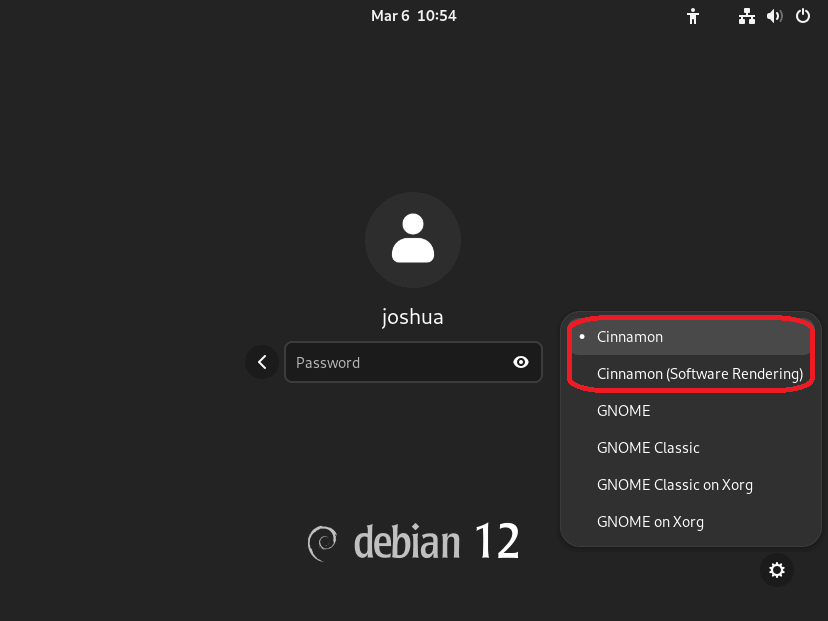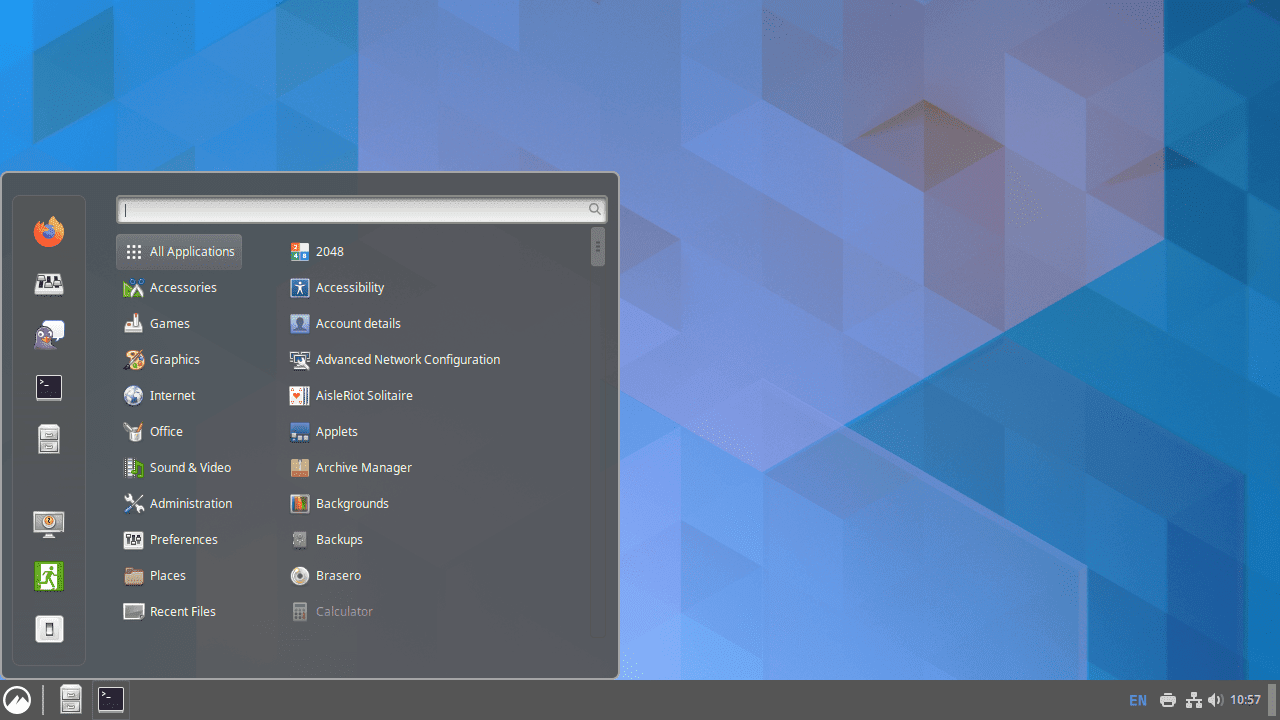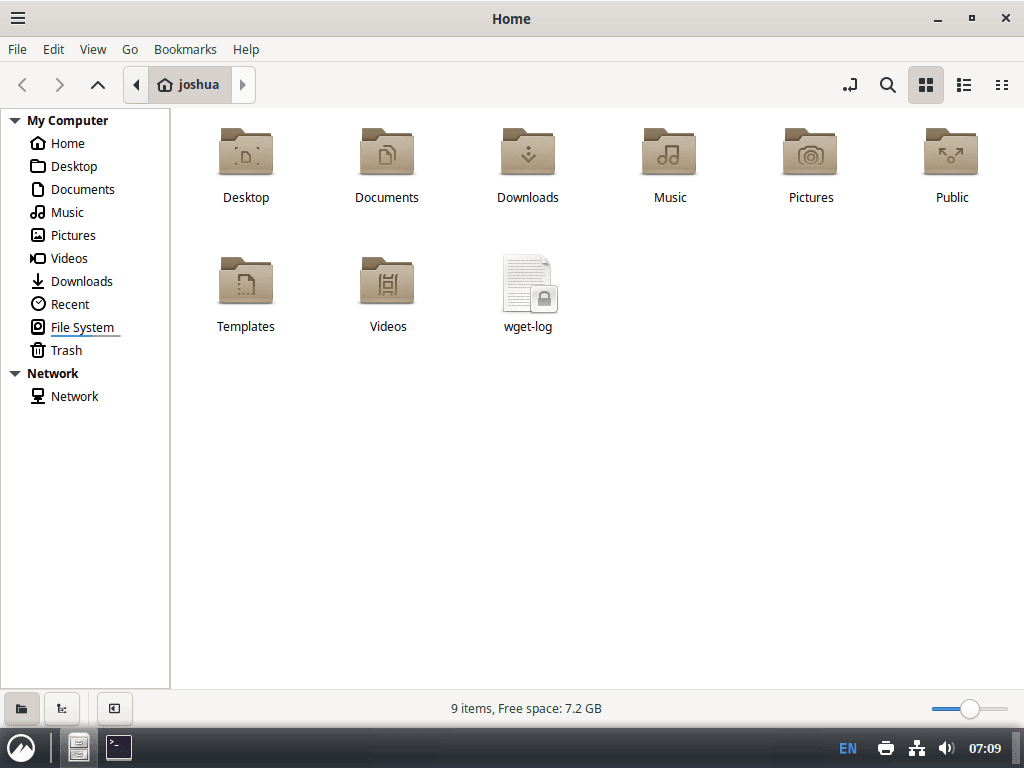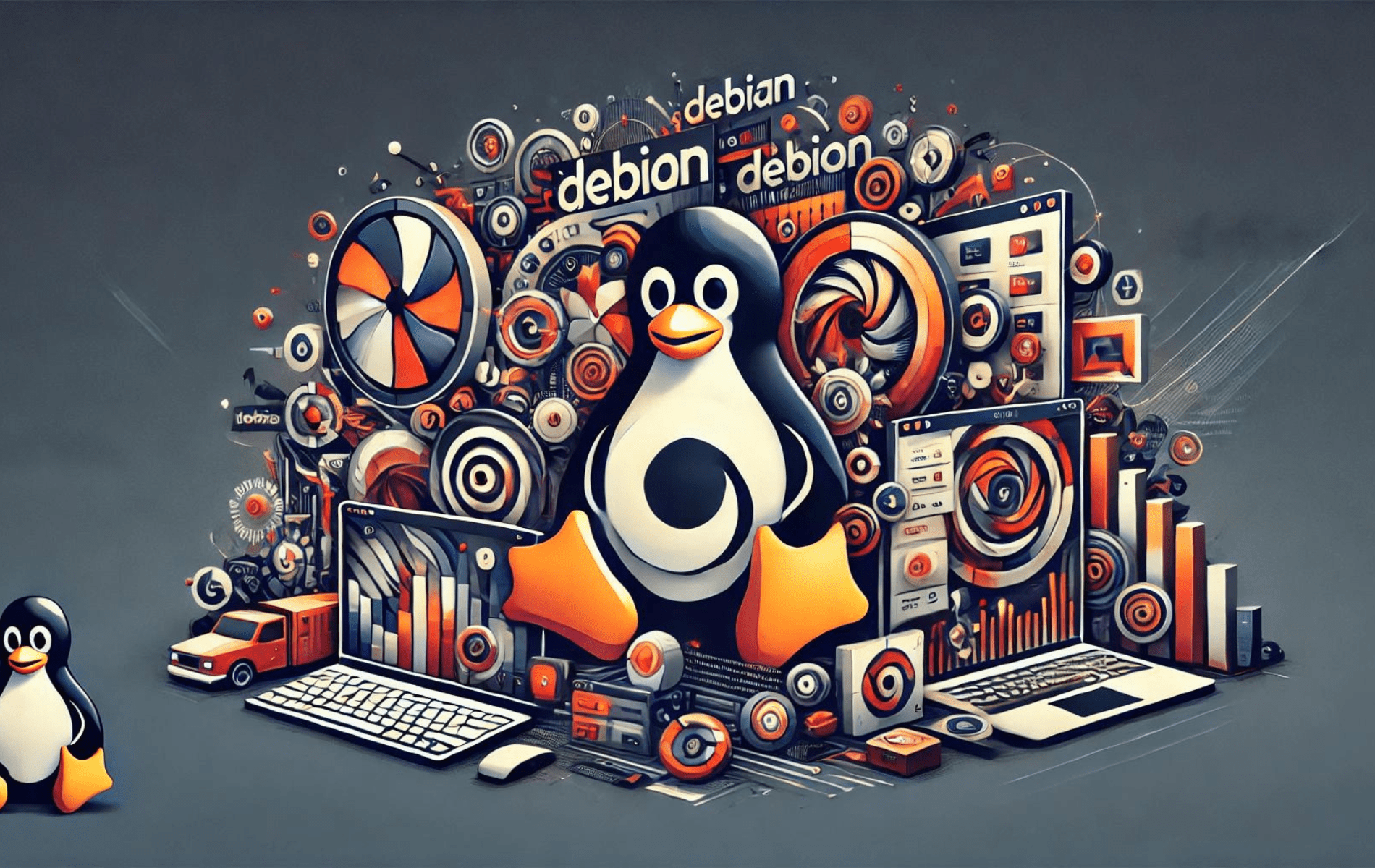The Cinnamon desktop environment offers a sleek and modern interface, ideal for Debian Linux users seeking an intuitive alternative to other desktop environments. Built by the Linux Mint team, Cinnamon combines the stability of Debian with an elegant and user-friendly design.
Features of Cinnamon:
- Modern Interface: Clean, visually appealing layout with easy navigation.
- Customizable: Extensive options to tweak the look and feel to match personal preferences.
- Performance: Optimized for speed and responsiveness, providing a smooth user experience.
- Applets and Desklets: Enhance functionality with mini-applications and widgets.
- Compatibility: Seamlessly integrates with existing Debian applications and tools.
- Active Development: Regular updates and a supportive community.
Benefits for Debian Users:
- User-Friendly: Ideal for both beginners and experienced users, simplifying daily tasks.
- Stable: Built on a robust framework, ensuring reliability and minimal crashes.
- Productive Environment: Efficient workflow with features like a powerful file manager and customizable panels.
- Resource-Efficient: Balanced use of system resources, maintaining performance without heavy demands.
Transitioning to Cinnamon on Debian can elevate your Linux experience with its polished and functional desktop environment. Let’s delve into installing and configuring Cinnamon on your Debian system.
Update the Debian System Before the Cinnamon Desktop Installation
It is essential to ensure your Debian system is up-to-date before installing the Cinnamon desktop environment. This includes both the core system packages and any other installed software.
To update your Debian system, follow the instructions below:
sudo apt update
sudo apt upgradeInstall Cinnamon Desktop Environment via APT Command
Cinnamon is readily available in Debian’s default repositories, making the installation process straightforward and ensuring stability between the new desktop environment and the original GNOME desktop. Although the appearance of Cinnamon may differ slightly depending on your Debian version, the differences are generally minimal and won’t impact your user experience.
To install the Cinnamon desktop environment on your Debian system, use the following command:
sudo apt install task-cinnamon-desktopThis command will download and install the necessary packages for the Cinnamon desktop environment.
After the installation, reboot your system to finalize the changes and switch to the Cinnamon desktop environment. You can reboot either through the graphical interface or by entering the following command in the terminal:
sudo rebootChange to Cinnamon Desktop Environment on Login
To change to the Cinnamon desktop environment, follow these steps:
- DO NOT LOG IN IMMEDIATELY: Wait before entering your login credentials.
- Locate the Desktop Environment Selection: Look for the desktop environment configuration icon in the top right-hand corner or near the login prompt.
- Select Cinnamon: Click on the configuration icon and choose “Cinnamon” from the available options. It is recommended that you select the standard “Cinnamon” option instead of “Cinnamon (Software Rendering).”
- Understand the Difference: The “Cinnamon (Software Rendering)” option is a fallback if you encounter issues with your graphics card when using the default Cinnamon desktop. However, it may result in lower performance and reduced visual effects, so it should only be used if necessary.
- Log In: After selecting the Cinnamon desktop environment, log in with your username and password.



Additional Commands
Remove Cinnamon
Sometimes, your requirements change, leading you to consider uninstalling Cinnamon. Whether you’re contemplating trying out another desktop environment or wish to revert to your original settings, uninstalling Cinnamon and its associated files is necessary.
The command below accomplishes this task:
sudo apt autoremove '^cinnamon' task-cinnamon-desktop --purgeExecuting this command will eliminate Cinnamon and all related files, thereby restoring your desktop environment to its condition before Cinnamon installation.
Re-install GNOME Default Desktop Environment
If you revert to the GNOME Desktop Environment post-Cinnamon uninstallation, updating your package list and re-installing the gnome, gdm3, and task-gnome-desktop packages is imperative. Execute the following commands to achieve this:
sudo apt update
sudo apt install gnome gdm3 task-gnome-desktop --reinstallActivating GDM
Before rebooting your system, activate GDM (GNOME Display Manager) to prevent the system from booting into a terminal or displaying a server-like login interface. If this happens, execute the command below to reinstate the GNOME Desktop login:
sudo systemctl enable gdm --nowIf the above command does not work, try the following:
sudo systemctl enable gdm3 --nowSystem Reboot
A system reboot is necessary to implement all modifications effectively. Issue the following command to initiate a system restart and apply all recent changes:
sudo rebootThe procedure above guides you through uninstalling Cinnamon and reverting to GNOME on your Debian Linux system. This is particularly useful if you want to explore the various desktop environments available for Debian Linux.
Conclusion
After guiding you through installing the Cinnamon Desktop on Debian 12, 11, or 10, you can now navigate the initial setup, transition to the Cinnamon environment upon login, and use the desktop efficiently with our first-time user tips. If your preferences or needs change, follow the outlined steps to remove the Cinnamon Desktop Environment efficiently. These instructions equip you to explore, use, and manage the Cinnamon Desktop on your Debian system confidently and efficiently, ensuring a seamless and productive user experience.
- How to Install Apache HTTPD on Fedora 40 or 39 - Tuesday, August 27, 2024
- Bash wait Command with Examples - Tuesday, August 27, 2024
- How to Install RetroArch on Fedora 40 or 39 - Saturday, August 24, 2024

